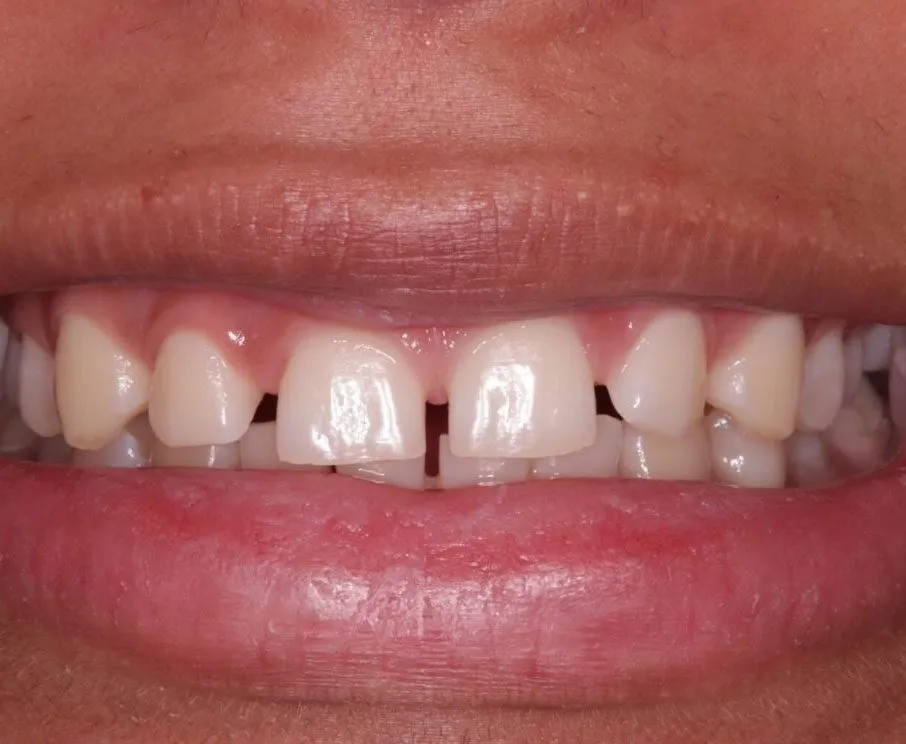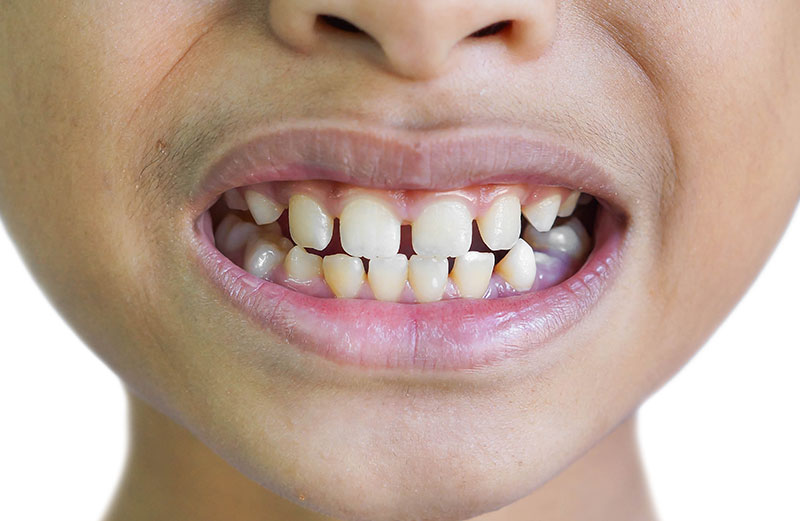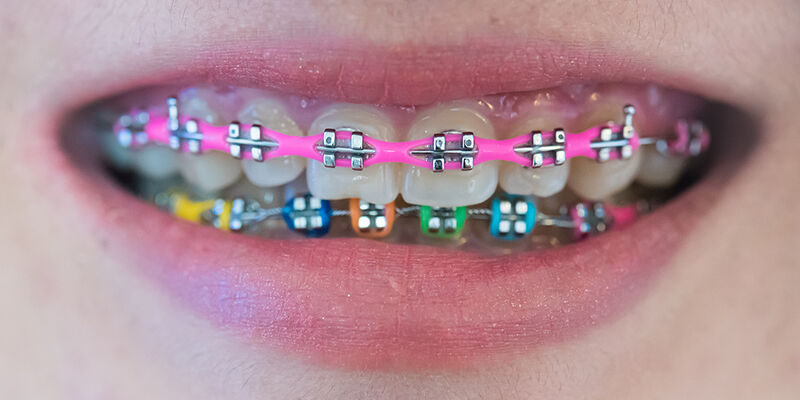How to fix space between teeth

Fixing spaces between teeth, also known as diastema, is a common concern for many individuals seeking dental aesthetics and functional improvement. Diastema can occur between any two teeth but is most noticeable between the upper front teeth. This comprehensive guide explores the causes of diastema, treatment options available, and considerations for maintaining oral health and aesthetics.
Understanding Diastema: What Causes Spaces Between Teeth?
Diastema, or spaces between teeth, can be caused by a variety of factors, including:
- Genetics: Some individuals may have a natural tendency towards spacing due to the size of their teeth compared to the size of their jawbone.
- Missing Teeth: Gaps can occur when there are missing teeth, allowing adjacent teeth to shift position over time.
- Dental Habits: Habits such as thumb sucking during childhood or using teeth for tasks like tearing packages can create gaps.
- Periodontal Disease: Gum disease can cause teeth to become loose and shift, resulting in spaces between teeth.
- Misaligned Teeth: Teeth that are too small or large, or teeth that have irregular shapes, can create gaps.
Treatment Options for Fixing Spaces Between Teeth
Several treatment options are available to correct diastema, depending on the cause, severity, and patient preference:
1. Orthodontic Treatment
Orthodontic treatment is often effective for closing spaces between teeth, particularly when the spacing is due to misalignment or tooth size discrepancies. Options include:
- Traditional Braces: Metal or ceramic brackets and wires gradually move teeth into the desired position over time.
- Clear Aligners (e.g., Invisalign): Custom-made clear trays that gently move teeth into alignment. They are removable for eating and cleaning.
2. Dental Bonding
Dental bonding uses tooth-colored composite resin to fill in gaps between teeth. This is a quick and relatively inexpensive cosmetic option.
3. Porcelain Veneers
Veneers are thin shells of porcelain custom-made to cover the front surface of teeth. They can effectively close gaps and improve the appearance of teeth.
4. Dental Crowns
Crowns, or caps, can be placed over teeth to fill in gaps, especially for teeth that are irregularly shaped or significantly smaller than neighboring teeth.
5. Dental Implants
For gaps due to missing teeth, dental implants can be surgically placed in the jawbone and topped with crowns to fill the space.
6. Orthognathic Surgery
In cases of severe jaw discrepancies causing diastema, orthognathic surgery may be required to reposition the jaw and align the teeth properly.
How to Fix Space Between Teeth: Step-by-Step Treatment Process
Step 1: Consultation and Evaluation
- Dental Examination: Your dentist or orthodontist will examine your teeth and gums to determine the cause and severity of the spacing.
- X-rays: X-rays may be taken to assess the position of the teeth and underlying bone structure.
Step 2: Treatment Planning
- Orthodontic Assessment: If orthodontic treatment is recommended, a personalized treatment plan will be created. This may involve traditional braces or clear aligners.
- Cosmetic Considerations: If cosmetic options like bonding, veneers, or crowns are preferred, your dentist will discuss the pros and cons of each option.
Step 3: Treatment Initiation
- Orthodontic Treatment: For braces, brackets will be bonded to the teeth, and wires will be adjusted regularly to move teeth gradually. With clear aligners, a series of aligner trays will be provided, each worn for a specified period.
- Cosmetic Procedures: Dental bonding, veneers, or crowns will be applied as per the treatment plan. Bonding involves roughening the teeth slightly, applying a conditioning liquid, and then applying tooth-colored resin that is shaped and hardened with a special light.
Step 4: Maintenance and Follow-up
- Orthodontic Maintenance: Regular dental visits will ensure that braces or aligners are adjusted properly and teeth are progressing as planned.
- Cosmetic Maintenance: Bonding, veneers, and crowns require regular dental check-ups for cleaning and maintenance.
Considerations for Maintaining Oral Health and Aesthetics
1. Regular Dental Hygiene
Maintaining good oral hygiene is crucial during and after treatment to prevent gum disease and tooth decay.
- Brushing: Brush teeth at least twice a day with fluoride toothpaste.
- Flossing: Clean between teeth daily with dental floss or interdental cleaners.
- Mouthwash: Rinse with mouthwash to help reduce plaque and prevent gum disease.
2. Diet and Nutrition
A balanced diet contributes to good oral health and overall well-being.
- Limit Sugary Foods: Reduce sugary snacks and beverages that can lead to tooth decay.
- Eat Nutritious Foods: Consume a variety of foods from each of the five major food groups, including whole grains, fruits, vegetables, lean protein, and low-fat dairy products.
3. Regular Dental Visits
Schedule regular dental check-ups every six months for professional cleaning and examination.
- Professional Cleaning: Remove plaque and tartar that can develop even with careful brushing and flossing.
- Oral Examination: Check for signs of tooth decay, gum disease, and other dental problems.
Conclusion
Fixing spaces between teeth, or diastema, is achievable through various treatment options tailored to the individual’s needs and preferences. Whether through orthodontic treatment like braces or clear aligners, cosmetic procedures such as bonding or veneers, or restorative treatments like dental crowns or implants, dental professionals can help achieve a straighter, more uniform smile. Maintaining good oral hygiene, attending regular dental check-ups, and adopting a healthy lifestyle contribute to long-term oral health and aesthetic satisfaction. Consulting with a qualified dentist or orthodontist is the first step towards achieving a confident and healthy smile free of gaps between teeth.
Related to read:
Best Oral Hygiene Practices For Optimum Oral Health.
How to Whiten Teeth Naturally?
How to keep your gums healthy and disease-free?
References
To ensure the information provided is accurate and up-to-date, the following sources were referenced:
- American Dental Association. (n.d.). Plaque and Tartar. Retrieved from ADA website
- Mayo Clinic. (n.d.). Dental Plaque. Retrieved from Mayo Clinic website
- National Institute of Dental and Craniofacial Research. (n.d.). Periodontal (Gum) Disease. Retrieved from NIDCR website
Can a Gap Between Teeth be Fixed?
Yes, a gap between teeth, also known as diastema, can typically be fixed through various dental treatments depending on the cause and severity of the gap. Here are some common methods used to close gaps between teeth:
- Orthodontic Treatment:
- Braces: Traditional braces use brackets and wires to gradually move teeth into the desired position over time. Braces are effective for closing gaps caused by misaligned teeth or jaw discrepancies.
- Clear Aligners: Clear aligners, such as Invisalign, are removable trays that exert gentle pressure to shift teeth. They are often preferred for their aesthetics and convenience.
- Dental Bonding:
- Dental bonding involves applying a tooth-colored composite resin to the teeth. The resin is sculpted to fill in the gap and then hardened with a special light. Bonding is a quick and relatively inexpensive cosmetic option for closing small to moderate gaps.
- Porcelain Veneers:
- Veneers are thin shells of porcelain custom-made to cover the front surface of teeth. They can effectively mask gaps between teeth by creating a uniform appearance. Veneers are a more permanent solution and are resistant to staining.
- Dental Crowns:
- Crowns, or caps, can be placed over teeth to close gaps, especially for teeth that are irregularly shaped or significantly smaller than neighboring teeth. Crowns also restore strength and function to damaged teeth.
- Dental Implants:
- For gaps caused by missing teeth, dental implants may be recommended. Implants are surgically placed in the jawbone and topped with crowns to fill the space. They provide a stable and long-lasting solution.
How Do You Close the Gap in Your Teeth?
Closing the gap in your teeth can be achieved through various dental procedures tailored to your specific needs and preferences:
- Consultation and Evaluation:
- Schedule a consultation with a dentist or orthodontist to evaluate the cause and severity of the gap between your teeth. X-rays and impressions may be taken to assess your dental health and help plan treatment.
- Orthodontic Treatment:
- Depending on the recommendation, orthodontic treatment such as braces or clear aligners may be prescribed. Braces use brackets and wires to gradually move teeth into alignment, while clear aligners apply gentle pressure to shift teeth discreetly.
- Dental Bonding:
- Dental bonding is a cosmetic procedure where a tooth-colored composite resin is applied to the teeth to fill in gaps. The resin is shaped and hardened to blend seamlessly with your natural teeth, providing immediate results.
- Porcelain Veneers:
- Veneers are custom-made thin shells of porcelain that are bonded to the front surface of teeth to improve their appearance. They can effectively close gaps and enhance the overall aesthetics of your smile.
- Dental Crowns or Implants:
- For larger gaps or missing teeth, dental crowns or implants may be recommended. Crowns can be placed over existing teeth or implants to fill the space and restore function and appearance.
- Regular Follow-up:
- Attend regular dental appointments to monitor progress and maintain oral health. Proper oral hygiene, including brushing and flossing, is essential to prevent dental issues during and after treatment.
How to Fill Gaps Between Teeth?
Filling gaps between teeth involves several treatment options depending on the size of the gap and the underlying cause:
- Orthodontic Treatment:
- Orthodontic appliances such as braces or clear aligners are effective for closing gaps caused by misaligned teeth or jaw discrepancies. Braces gradually move teeth into alignment, while clear aligners provide a more discreet option.
- Dental Bonding:
- Dental bonding uses a tooth-colored composite resin that is applied to the teeth to fill in gaps. The resin is shaped and hardened to blend with your natural teeth, providing a quick and affordable cosmetic solution.
- Porcelain Veneers:
- Porcelain veneers are custom-made thin shells that are bonded to the front surface of teeth to improve their appearance. Veneers can effectively close gaps and enhance the overall aesthetics of your smile.
- Dental Crowns or Bridges:
- For larger gaps or missing teeth, dental crowns or bridges may be recommended. Crowns can be placed over existing teeth or implants to fill the space and restore function and appearance.
- Dental Implants:
- Dental implants are surgically placed in the jawbone and topped with crowns to replace missing teeth and fill gaps. Implants provide a stable and long-lasting solution for restoring dental aesthetics and function.
Can You Fix Teeth Gap at Home?
While there are various over-the-counter products and techniques that claim to close gaps between teeth, it is generally recommended to seek professional dental care for effective and safe treatment. Here are some considerations:
- Orthodontic Bands:
- Elastic bands or separators marketed for closing gaps between teeth should be used under the guidance of a dentist or orthodontist. Improper use can cause damage to teeth and gums.
- Dental Bonding Kits:
- Some dental bonding kits are available for home use, but they may not provide the same quality and longevity of results as professional dental bonding performed by a trained dentist.
- DIY Orthodontic Treatment:
- DIY braces or aligners can pose serious risks to dental health, including tooth movement in unintended directions, gum damage, and potential tooth loss. Orthodontic treatment should always be supervised by a qualified professional.
- Oil Pulling and Herbal Remedies:
- Oil pulling and herbal remedies are not scientifically proven to close gaps between teeth. These methods may promote oral hygiene but are unlikely to effectively treat dental spacing issues.
- Consultation with a Dentist:
- To safely and effectively close a gap between teeth, schedule a consultation with a dentist or orthodontist. They can evaluate your dental health, discuss treatment options tailored to your needs, and ensure proper care for optimal results.
Closing gaps between teeth requires a personalized approach based on the underlying cause and individual preferences. Professional dental care ensures safe and effective treatment to achieve a confident smile and maintain long-term oral health.
Is Gap Teeth Attractive?
The attractiveness of gap teeth, also known as diastema, is subjective and cultural. Some people find gap teeth charming or distinctive, considering them a unique feature that adds character to a person’s smile. Historically, gap teeth have been associated with beauty ideals in certain cultures, such as in West Africa and parts of Asia.
However, perceptions of attractiveness can vary widely. In Western cultures, where straight and even teeth are often emphasized as ideal, some individuals may seek treatment to close gaps for aesthetic reasons. Ultimately, beauty standards are personal and can differ greatly from one person to another.
What is the Cheapest Way to Close a Gap in Your Teeth?
The cost-effective methods to close a gap between teeth depend on the cause and size of the gap. Here are some affordable options:
- Dental Bonding: Dental bonding uses tooth-colored composite resin to fill in the gap. It is a quick and relatively inexpensive cosmetic procedure.
- Orthodontic Bands: Elastic bands or separators, when used under dental supervision, can help close small gaps between teeth.
- DIY Teeth Gap Bands: Some over-the-counter teeth gap bands are available, but they should be used cautiously and under dental guidance to avoid damage to teeth and gums.
Do Tooth Gaps Close Naturally?
In some cases, tooth gaps may close naturally, especially in children and teenagers as their permanent teeth come in and their jawbone continues to grow. Factors such as dental habits, genetics, and the size of teeth compared to jaw size can influence natural closure of gaps.
However, if the gap is due to structural issues or habits like tongue thrusting, it is less likely to close on its own. Consulting a dentist or orthodontist is recommended to evaluate the cause and determine if treatment is necessary.
How Do I Fix My Gap Teeth Without Braces?
Closing gap teeth without braces can be achieved through various cosmetic and dental procedures:
- Dental Bonding: Using tooth-colored composite resin to fill in the gap and reshape teeth for a natural appearance.
- Porcelain Veneers: Thin shells of porcelain that cover the front surface of teeth to mask gaps and improve overall aesthetics.
- Dental Crowns: Caps placed over teeth to fill gaps and restore function, especially for larger gaps or irregularly shaped teeth.
- Orthodontic Aligners: Clear aligners like Invisalign, which gradually shift teeth into alignment without the use of traditional braces.
Why Am I Getting Gaps in My Teeth?
Several factors can contribute to the development of gaps between teeth:
- Genetics: Some individuals may have a natural tendency towards spacing due to the size of their teeth compared to the size of their jawbone.
- Missing Teeth: Gaps can occur when there are missing teeth, allowing adjacent teeth to shift position over time.
- Dental Habits: Habits such as thumb sucking during childhood or using teeth for tasks like tearing packages can create gaps.
- Periodontal Disease: Gum disease can cause teeth to become loose and shift, resulting in spaces between teeth.
- Misaligned Teeth: Teeth that are too small or large, or teeth that have irregular shapes, can create gaps.
Is Gap Teeth a Disorder?
Gap teeth, or diastema, is not typically considered a disorder but rather a variation in dental anatomy. In some cases, diastema may be associated with certain genetic conditions or syndromes, but it is often a benign condition.
However, individuals may seek treatment for diastema due to aesthetic concerns or functional issues such as difficulty chewing certain foods. Treatment options are available to address diastema depending on the cause and patient’s preferences.
Do Gaps in Teeth Get Bigger with Age?
Gaps in teeth do not necessarily get bigger with age for everyone. The size and progression of gaps can vary depending on several factors:
- Dental Habits: Continued habits like tongue thrusting or thumb sucking can contribute to gaps becoming larger over time.
- Periodontal Health: Gum disease or bone loss can affect the stability of teeth, potentially leading to increased spacing.
- Orthodontic Treatment: Previous orthodontic treatment or lack thereof can influence the alignment of teeth and gaps over time.
Regular dental check-ups can help monitor any changes in the size or appearance of gaps between teeth and address them as needed.
How to Push Front Teeth Back Naturally?
Pushing front teeth back naturally is not typically achievable without professional dental intervention. Orthodontic treatment, such as braces or clear aligners prescribed by a dentist or orthodontist, is necessary to safely and effectively move teeth into proper alignment.
Attempting to manipulate teeth without proper training or guidance can lead to dental damage, bite issues, and other complications. Consulting with a dental professional is essential to discuss treatment options tailored to your specific dental needs.
How Can I Permanently Close My Teeth Gap?
Closing a teeth gap permanently depends on the cause and severity of the gap. Permanent solutions may include:
- Orthodontic Treatment: Braces or clear aligners can gradually shift teeth into alignment, closing the gap permanently.
- Dental Bonding: Bonding uses tooth-colored composite resin to fill in the gap, providing a cosmetic solution that can last several years with proper care.
- Porcelain Veneers: Veneers are custom-made thin shells of porcelain bonded to the front of teeth to cover gaps and improve aesthetics permanently.
- Dental Crowns or Implants: For larger gaps or missing teeth, crowns or implants can be placed to fill the space and restore function permanently.
Regular dental visits and proper oral hygiene are important for maintaining the results of any dental procedure used to close a teeth gap.
How Do You Fix Missing Teeth Gaps?
Fixing gaps due to missing teeth can be achieved through several dental procedures:
- Dental Implants: Surgically placed in the jawbone and topped with crowns, implants provide a permanent solution for replacing missing teeth and filling gaps.
- Dental Bridges: Bridges consist of artificial teeth (pontics) attached to crowns on adjacent teeth (abutments) to fill the gap left by missing teeth.
- Partial Dentures: Removable appliances with artificial teeth that can replace one or more missing teeth and fill gaps.
- Orthodontic Treatment: In some cases, orthodontic treatment may be combined with other dental procedures to align teeth and prepare for restorative options like implants or bridges.
Consulting with a dentist or prosthodontist is essential to determine the most appropriate treatment for filling gaps due to missing teeth based on your dental health and preferences.
How Fast Do Braces Close Gaps?
The speed at which braces close gaps between teeth depends on several factors, including the size of the gap, the type of braces used, and individual dental characteristics. Generally, braces can start showing noticeable results within a few weeks to a few months of treatment initiation.
- Traditional Braces: Metal or ceramic brackets and wires gradually move teeth into alignment over an average treatment period of 18 to 24 months, depending on the complexity of the case.
- Clear Aligners: Aligners like Invisalign apply gentle pressure to shift teeth and can close gaps within a similar timeframe as traditional braces, depending on compliance with wearing aligners as directed.
Progress is monitored regularly by a dentist or orthodontist, who adjusts treatment as needed to achieve optimal results in closing gaps and achieving a straighter smile.








